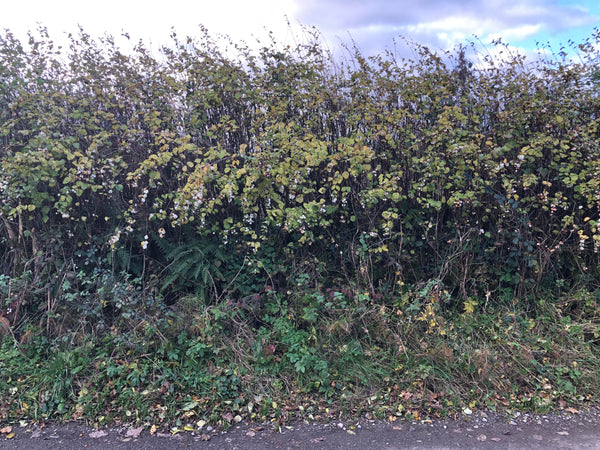
The Snowberry
Share
I have a pathological dislike of the Snowberry. Wikipedia tells me there are 15 different species of the wretched things, native to the Americas and China. BUT NOT THE UK.

Its defenders tell me it's a great berrying shrub. Well - er - yes, of course it is. Its (to my mind) odd looking white berries are gobbled by all sorts of larger birds. But then, so are the sloes, haws, berries and hips of our native species - which have culinary uses too. Yes, the Snowberry has teeny flowers which butterflies and bees visit - but then most native hedge species have too. And, of course, it doesn't have the bonus of being a foodplant for many caterpillars. According to my entomologist friend Richard it's only associated with 6 fly larvae and 6 moths.
The next virtues you see listed by nurseries trying to sell it as a hedge plant give you a clue as to why I don't get on with it. It's "vigorous and suckering, growing well even in low light levels".
When it gets going in a hedge, as it does around here, combined with the usual unsympathetic flailing and within a few years all the other species have disappeared. Here's a section of hedge down our lane, which used to be a predominantly Hazel/Blackthorn/Hawthorn/Field maple mix:

The biodiversity the hedge supports collapses. Snowberry is a hopeless hedge plant anyway as it's too spindly to make a proper barrier, and it certainly can't be laid. And if it can't make a proper barrier, it can't form a safe habitat for small mammals and birds. Snowberry hedges are no hedges at all.
It's taken over a 10m stretch of one of our hedges here, and once my hip replacement has settled in my number one job of the winter is to have it all out and replace it with something altogether more helpful and attractive. Can't wait.


